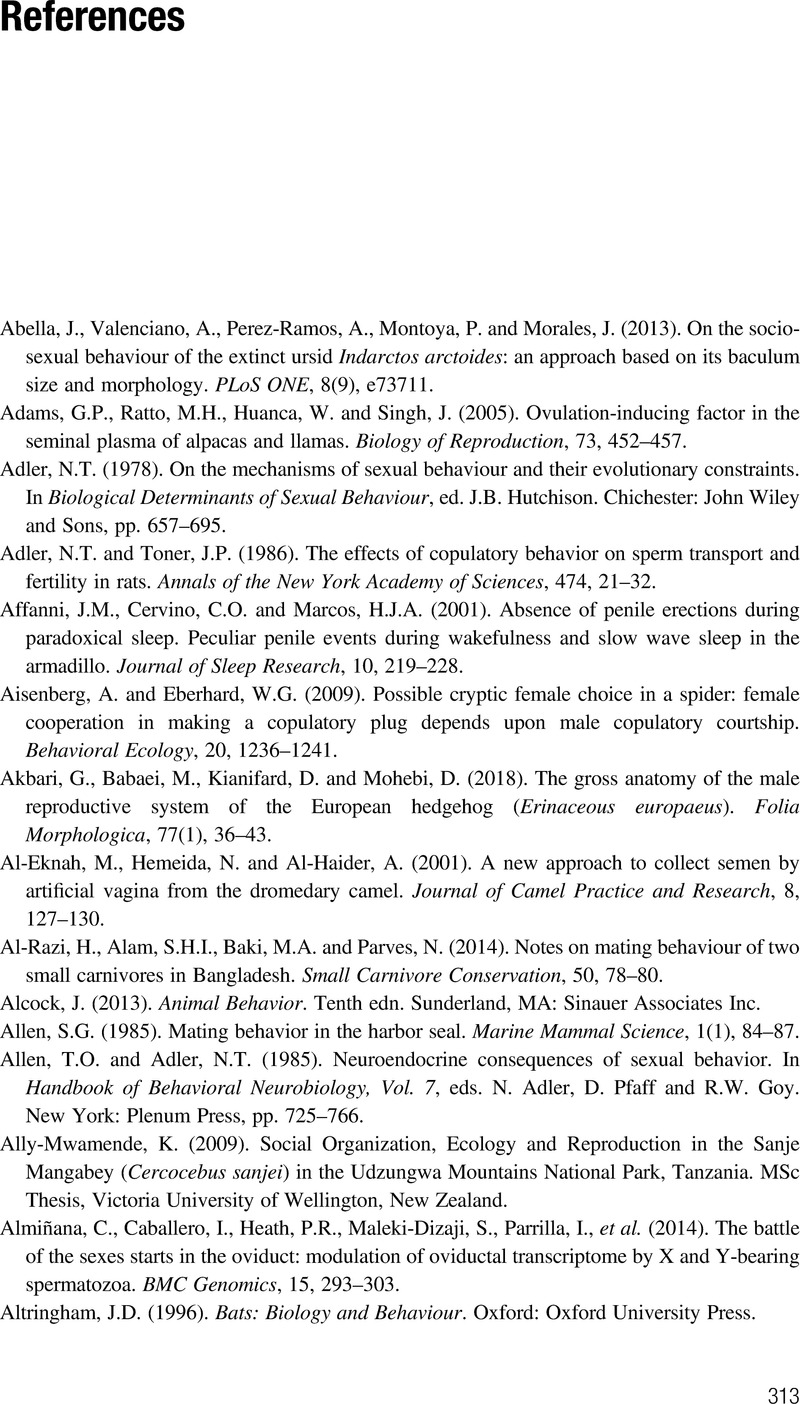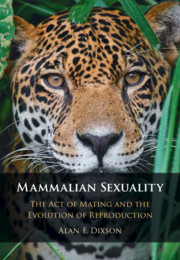References
Published online by Cambridge University Press: 20 May 2021
Summary

- Type
- Chapter
- Information
- Mammalian SexualityThe Act of Mating and the Evolution of Reproduction, pp. 313 - 370Publisher: Cambridge University PressPrint publication year: 2021



